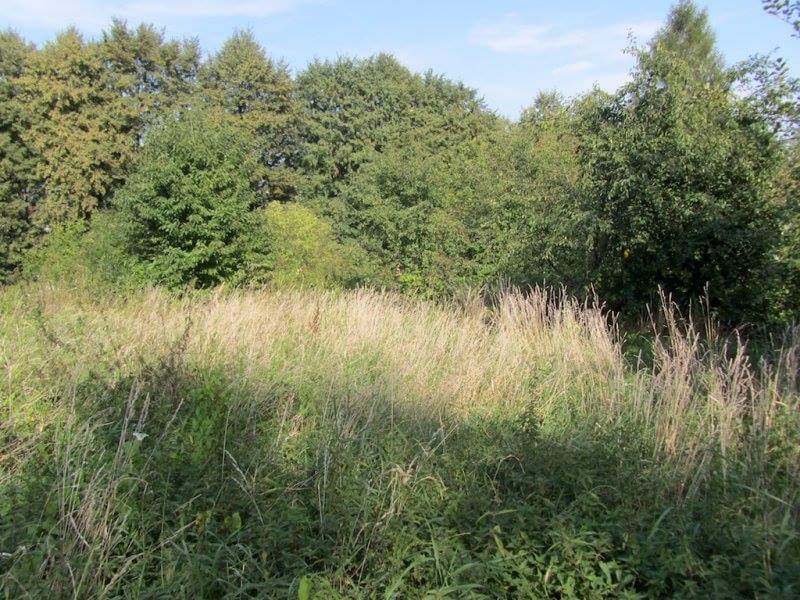 Alternate names: Przemyśl [Pol], Pshemishl, פּשעמישל [Yid], Premslau [Ger], Prömsel [Ger], Peremyshl, Перемышль [Rus], Peremyšl, Перемишль [Ukr], Praemislia [Lat], Pshemishel, Premishla, Premisle, Prezhemisel, Pshemishel, Pshemysl. 49°47' N, 22°47' E, Major city in SE Poland, near border with Ukraine. 54 miles W of L'viv. 1900 Jewish population: 13,000. This city in SE Poland with 66,756 inhabitants in June 2009 became part of the Subcarpathian Voivodeship in 2006 and previously was the capital of Przemyśl Voivodeship. Przemyśl is in an area connecting mountains and lowlands with easy communication and fertile soil on the navigable San River. Important trade routes passed through Przemyśl. Przemsyl Ghetto. Holocaust history. [June 2009]
Alternate names: Przemyśl [Pol], Pshemishl, פּשעמישל [Yid], Premslau [Ger], Prömsel [Ger], Peremyshl, Перемышль [Rus], Peremyšl, Перемишль [Ukr], Praemislia [Lat], Pshemishel, Premishla, Premisle, Prezhemisel, Pshemishel, Pshemysl. 49°47' N, 22°47' E, Major city in SE Poland, near border with Ukraine. 54 miles W of L'viv. 1900 Jewish population: 13,000. This city in SE Poland with 66,756 inhabitants in June 2009 became part of the Subcarpathian Voivodeship in 2006 and previously was the capital of Przemyśl Voivodeship. Przemyśl is in an area connecting mountains and lowlands with easy communication and fertile soil on the navigable San River. Important trade routes passed through Przemyśl. Przemsyl Ghetto. Holocaust history. [June 2009]
In June 2009, Freund participated in the dedication of a memorial plaque on the former Przemysl New Synagogue (1910), known as the Scheinbach synagogue and now used as a public library. At that time he challenged city officials to return the former cemetery.Przemsyl, which was once a central Polish town, but is now located near the border of Ukraine, was once at town with a thriving pre-Holocaust Jewish population (estimated at 30% of the total). As the cemetery of a major town it also served, according the FODZ researchers nearby communities of Jaroslav, Pruchnik, Kanczuga and Dynow.
- JOWBR burial list for new cemetery: Cmentarz Zydowski, ul. Slowackiego.
- JOWBR burial list for new cemetery: Przemysl - Old Cemetery.
- An Inventory of Przemysl's (New) Jewish Cemetery [September 2016]
- Sefer Przemysl. (Tel Aviv, 1964).
- ShtetLink. [October 2000]
CEMETERIES
OLD CEMETERY:
The Jewish homes were founded outside the walls of the city on the road to Nehrybki between the current ul Wandy and ul Rakoczy. This old cemetery was documented first in 1568 in the privilege issued by King Sigismund Augustus and again in 1571 regarding damage. Since in 1638 King Władysław IV gave the Jews the privilege allowing them to use "the synagogue cemetery: and indicating that the cemetery also served the surrounding cities including Jarosławia, Pruchnik, Kańczugi, and Dynów. Five years later the cemetery area was enlarged. Land also was purchased in 1765. An 18th century fence shows in archival records. During WWII, this cemetery was destroyed, its stone gravestones used for making roads and streets including the barracks on ul Mickiewicz. Without care cemetery slipped into oblivion. Before WWII, archival photographs in the Muzeum Narodowego Ziemi Przemyskiej show that the cemetery had a large group of graves from the 16th century, the oldest being that of a woman namedhttp://jewishprzemysl.com/ Gitel bat Gershon, who died on September 23, 1574 (8 tiszri 5335). In the mid-19th century, the cemetery occupied two hectares and was almost completely filled. The Jewish Community in Przemysl needed a new cemetery.
[September 2014] QUOTE from Sam Gruber's Blog Reconstruction of cemetery "(ISJM) Last month (Feb 23) Michael Freund reported in the Jerusalem Post that the long abandoned and neglected "Old" Jewish cemetery of Przemsyl,has been restituted to the ownership of the foundation for the Preservation of Jewish Heritage in Poland (FODZ). The site on is still marked by an impressive stone entrance gate. Only a few gravestones from the cemetery have survived (photos) gravestones on the site which dates to the 16th century, it is believed that the burials remain intact, and the Foundation (FODZ) plans to clean the site and protect it. The carved gravestones were removed by the German occupiers of the town during the Second World War. To date, none have been located, but ti is possible that many were reused nearby for pavements and building material and some may be still be found. A second of "New" cemetery still survives in the town. This has hundreds of surviving stones, including post-1945 burials.
NEW CEMETERY:
Development of Przemyśl in the 19th century meant locating cemeteries away from built up areas so the new cemetery was established on the then outskirts of the city on the slope of the hill at the present ul Słowackiego with separate sections for men and women. Initially, the dead buried in the center of the cemetery. The eastern part of the cemetery from ul Slowacki was used for burials of the wealthiest Jews in the interwar period. In 1913, construction of the fence was completed along with the gate still standing that carried the words: "This part of the wall with iron gates was built in 1913. Arnold Rabinowicz". Despite damage, the cemetery still contains approximately three hundred gravestones, some traditional. In the early 20th century, new forms like obelisks with inscriptions in Polish and German were popular. After the war, near the gate a monument was dedicated to the "Memory of 4,000 Jews, the victims of Nazi crimes in 1939-1944." In 2002, thanks to Peter and Jack Szwiców, Yale Reisner (Jewish Historical Institute) and Luke Biedki inventoried the graves. Cemetery restoration project. photos. photos. The locked cemetery gate key is held in a house across the street from the cemetery. The cemetery has distinct sections. Near the entrance are matzevot from the 1930's. Further on the left fare post-war memorials. Extensive renovation of the graves in these sections occurred. Many stones, often illegible, sit atop new concrete bases. Very old graves are directly in front of the main gate with a much larger section of old graves at the back of the cemetery on high ground although at the very back are graves and a memorial to Jews murdered by Nazis in September 1939 with 102 names on the memorial. video. [June 2009]
- MASS GRAVES:
First mass executions of Jews took place between 16 and 19 September 1939, at several places in the city outskirts: Lipowica, Pralkowce, Pikulice, at Przekopana, near the Wiar river and near the Jewish cemetery at Slowackiego Street. According to some estimates as many as 600 Jews were murdered. From spring 1942, consecutive shootings of groups of Jews at the Jewish cemetery at Slowackiego Street began. These shootings were carried out by the Gestapo. Further is the mass grave of Jews from Medyka murdered by the Germans in 1943 and a symbolic tomb of the well-known social worker, the master Emil Klausner, murdered by the NKVD in Katyn. The center of the cemetery held twelve mass graves of victims of Nazi executions. Here, a hotel was constructed 1960. Here, the drunken Gestapo shot naked Jews, shooting some unfortunate victims in advance and sometimes burying slightly injured victims alive. [June 2009]
Miriam Weiner reports cemeteries are: 1. ul Juliusza Slowackiego: founded 1822 [old cemetery]; 1,000 remaining tombstones and Holocaust memorial.2. ul. Rakoczego: nothing left; vegetable garden [new cemetery].
"There are readable stones...several cemeteries. My memory is a bit dim but at least one old cemetery was destroyed. What exists today, is a newer cemetery. The stones with surnames were from the liberal Jewish community and the post-war deaths. When I was there in 1986, the cemetery was still serving the handful of Jews left in the community. ... undergrowth, thorny plants covering everything; ... getting photos in dark forests will be daunting." Source: Suzan Wynne This email address is being protected from spambots. You need JavaScript enabled to view it. on 15 Jun 2002 JewishGen Digest. [June 2002]
US COMMISSION REPORTS:
PRZEMYSL (I): US Commission No. POCE000157
Przemysl in Przemysl Province, 49º48N 22º47E, 86 km from Rzeszow. The old cemetery is located on Szaszkiewicza Str. The population is 25000-100000 with no Jews.
- Town: Urzad Miejski ul. Rynek 1, tel. 6820. and region Konserwator Zabytkow 37-700 Przemysl, tel. 5944 ul. Rynek 24, Mgr. Pawel Koziot.
Earliest Jewish community was 1537. 1921 Jewish population (census) was 18,360. Orthodox Jewish cemetery was established in 1568. The isolated urban flat land is reached by turning off public road. Access is open to all with no wall, fence or gate. No stones are visible and no known mass grave. The cemetery site is for industrial or commercial use. Adjacent properties are residential. There is no maintenance, structures, or threats.
Jan Pawel Woronczak, Sandomierak Str. 21 m. 1 02-567 Warszawa, tel. 49-54-62 completed survey on December 30, 1991 after visiting the site. Additional documentation: A. Fenerak, Zarys dziejow cmentary Przmyskich, Premysl, 1981.
PRZEMYSL (II) US Commission No. POCE000158
This new cemetery is on Stowackiego Str. near the municipal cemetery. Landmarked Orthodox Jewish cemetery (new) was established in second half of 19th century (before 1895). Last known Jewish burial was some time after World War II. The suburban hillside, separate but near the municipal cemetery, is on Slowackiego Str. Reached by turning directly off the public road, access is open to all with a broken masonry wall and locking gate. The site before WWII and now is about 5.01 ha. 500-5000 stones are visible, most in original location, but some moved. The marble, sandstone and slate flat shaped, finely smoothed and inscribed, flat with carved relief decorations, or multi-stone monuments date from the 20th century. Some graves have metal fences around them. Inscriptions are in Hebrew, Polish and German. The cemetery contains a special memorial to Holocaust victims but no structures. The municipality owns site used only as Jewish cemetery. Adjacent properties are agricultural and a municipal cemetery. Occasional private persons stop. The site was vandalized during World War II but not in the last ten years. Vegetation is a constant problem disturbing stones; maintenance involves the partial clearing of vegetation. Weather erosion has contributed to the poor quality of the tombstones. Massive overgrowth makes access to many parts of the cemetery impossible.
Jan Pawel Woronczak, Sandomienski Str. 21 m 1. 02-567 Warszawa tel. 49-54-62 completed survey 30 December 1991. Site was visited in August 1990.
REFERENCES:
- First Przemysler Sick Benefit Society (New York, N.Y.) Records, 1906-1965. Description: 3.9 linear ft. Notes: Landsmanshaft founded in 1889 by Jewish immigrants from Przemyâsl, Poland...YIVO collections are in Yiddish, Russian, Polish, English, Hebrew, and other European and non-European languages. Location: YIVO Institute for Jewish Research, New York, NY. Control No.: NXYH89-A813
- They Lived Among Us: Polish Judaica, a travel brochure: Arline Sachs, This email address is being protected from spambots. You need JavaScript enabled to view it.
- Gruber, Ruth Ellen. Jewish Heritage Travel A Guide to East-Central Europe. New York: John Wiley & Sons, Inc., 1992. p. 77Cohen, Chester G. "Jewish Cemeteries in Southern Poland" from `An Epilogue' in Shtetl Finder. 1980."The newer cemetery had some gravestones standing, but no trace was found of the old cemetery."
- Photos by This email address is being protected from spambots. You need JavaScript enabled to view it. [2014]
- photo. synagogue photo. [August 2005]. Cemetery photos. [January 2006]
- Photos by Charles Burns [April 2016]
- Photo courtesy of This email address is being protected from spambots. You need JavaScript enabled to view it. [May 2015]

